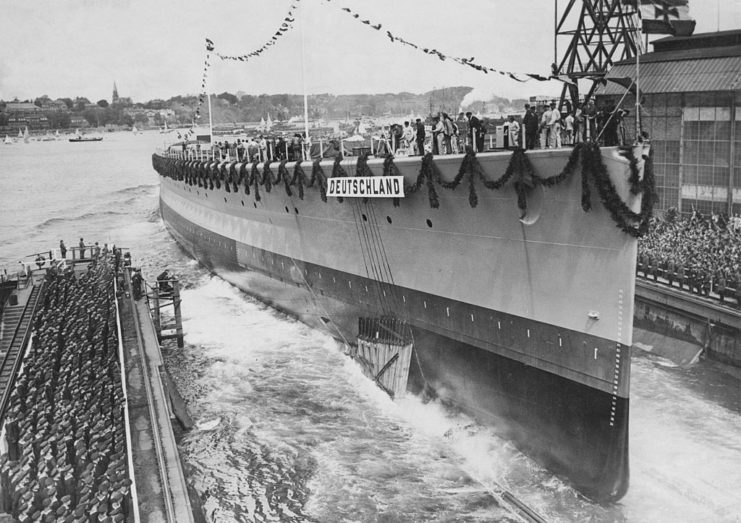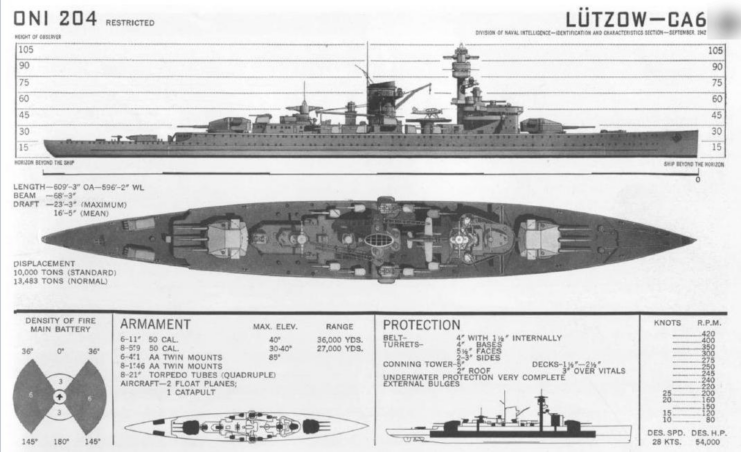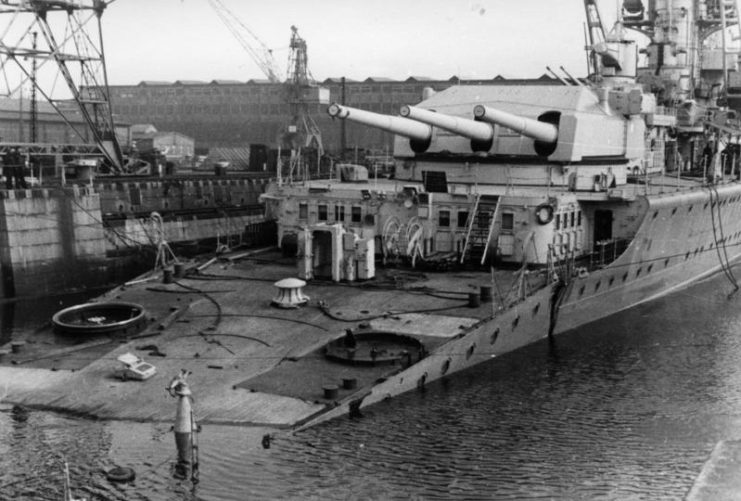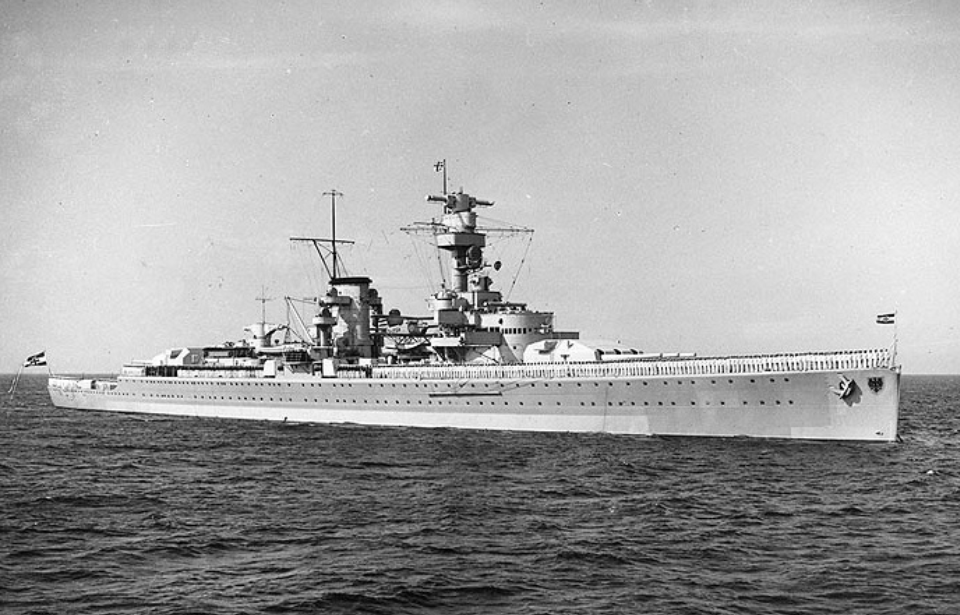Many ships have had their names changed or passed on to another. For example, the US Navy has had eight different vessels called Enterprise, with a ninth planned to carry on the legacy. A number of different ones saw action during World War II, and some, like the German cruiser Deutschland, had their names changed in the middle of the conflict.
This happens for a number of reasons, including older vessels being demolished or sold to other countries, where they receive names in accordance with their new owners’ naval traditions. Deutschland, however, was renamed for a much different, albeit practical, reason.
German Cruiser Deutschland

Deutschland was the first Panzerschiffe constructed by the Germans, and she was launched in May 1931 as one of three heavily-armored cruisers, along with the Admiral Scheer and Admiral Graf Spee. They were designed within the confines of the Treaty of Versailles, and were the first ships to rebuild and bolster the German Navy, later known as the Kriegsmarine.
Deutschland was 610 feet long, could reach a top speed of 28 knots and was well-equipped with armaments that were improved upon during the Second World War. She was used for non-intervention patrols during the Spanish Civil War, during which she was attacked by bombers. During the second bombing, Deutschland suffered damage to her upper deck, armored deck and third starboard, resulting in the death of 31 crew members.
In the lead-up to WWII, Deutschland, along with her sister ship Admiral Graf Spee, were positioned in the Atlantic Ocean to attack Allied vessels once Germany officially declared war.
Changing Deutschland‘s name

The decision to rename Deutschland came from the Führer himself. He realized it would be a public relations disaster to have a ship sharing the country’s name, sink. In wartime, this was always a possibility, and renaming her would avoid scandal or public discontent.
It was decided the cruiser would become Lützow. The original Lützow had been purchased by the Soviet Union in 1939, freeing up the name for use. Aside from removing the name, Adm. Erich Raeder hoped the change, in conjunction with the sale, would confuse the Allies.
During this time, the vessel was modified to add a raked clipper bow, to make her perform better while at sea. She was also re-designated a heavy cruiser.
Lützow was attacked numerous times during World War II

As it turns out, it was a good idea for Deutschland‘s name to be changed, as she was attacked – and heavily damaged – on more than one occasion. The heavy cruiser was deployed during the German invasion of Norway and torpedoed by the British Royal Navy submarine HMS Spearfish. Lützow was later attacked by the Royal Air Force (RAF) in 1945.
Both attacks caused damage to the ship, which required significant repairs.
More from us: All Five of the Second World War’s Triple Aces in a Day Flew for the German Luftwaffe
While there was initially discrepancies over what happened to Lützow at the end of the war, records from Soviet archives indicate she was taken by the Soviet Navy and used as a target ship. She was sunk during weapons testing in the Baltic Sea, off the Polish coast, on July 22, 1947.
